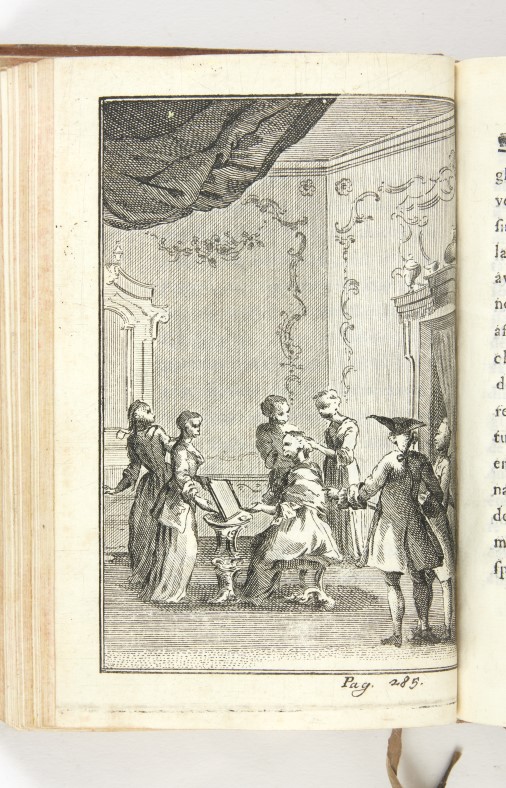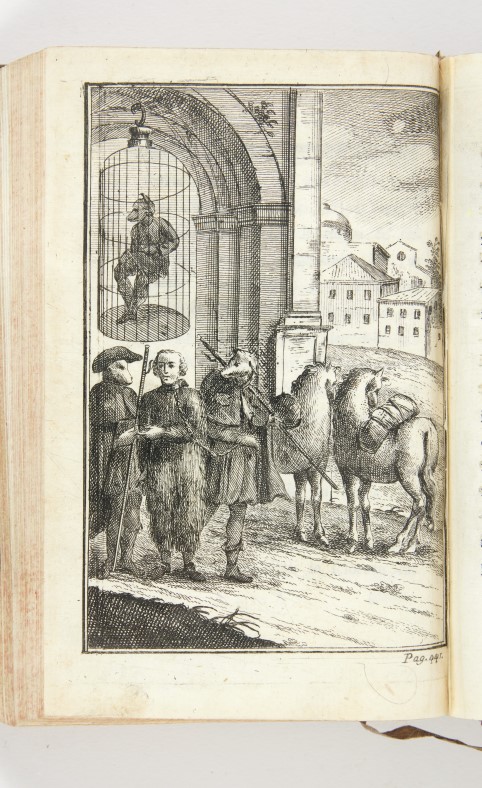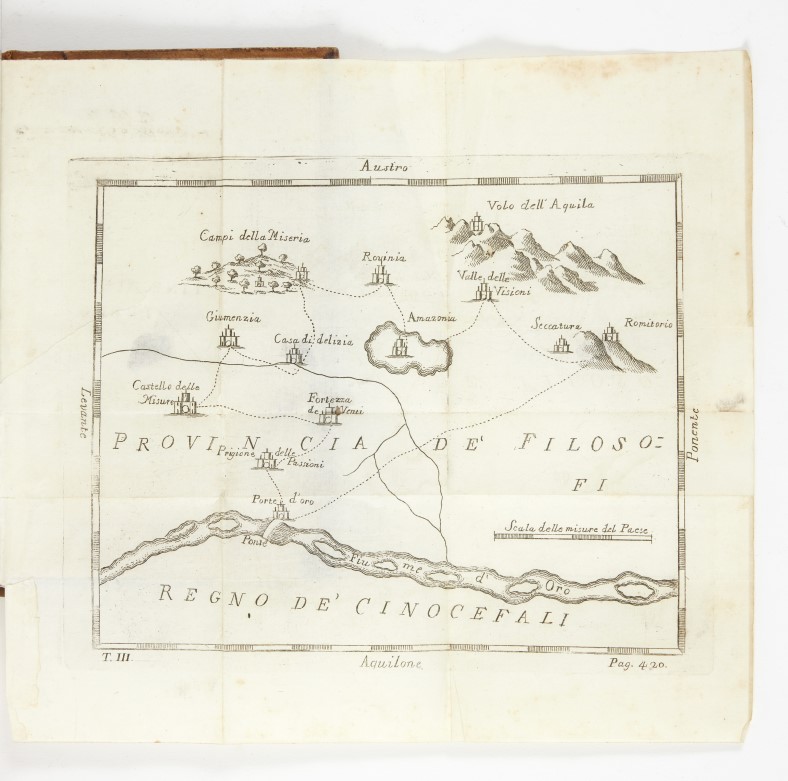In stock
First edition containing the large engraved folding map, second edition of the text with important additions and corrections. The utopic map depicts the imaginary province of the philosophers (“Provincia de Filosofi”) as well as the kingdom of Dogheads (“Regno de’ cincefali”). The 32 engraved plates depict monkeys dressed as humans and within decorations inspired by Venetian Palaces, most likely inspired by paintings by Pietro Longhi (1701-1785).
This edition, published under a Swiss address at Bern (but indeed printed in Venice), contains here not only for the first time the chapter on kingdom of Dogs, but also the portait of the works main character “Enricus Wanton Anglus” and last, but not least, the large folding map. This map is “exceedingly rare and seldom catalogued, any edition is worth adding to a collection” (Davidson).
“Dampier’s and Swift’s use of the simian trope of a way to capture Antipodal monstrousness was taken further in the utopian novel Viaggi di Enrico Wanton alle Terre Incognite Australi by Zaccaria Seriman, first published in 1749 and expanded in 1764. The first part of the novel takes the protagonist, a young Englishman named Enrico (Henry), to the Antipod rego delle scimie, the kingdom of the apes. As a classic antipodal inversion, the simian kingdom is a satire clearly aimed at Seriman’s hometown of Venice, lampooning in true Enlightenment fashion the lagoon republic’s baroque refinement of manners and customs. Antipodal monstrosity serves here again as a form of embodied satire that articulates by way of physiologial otherness a feeling of alienating sameness. In other words, Seriman’s kingdom of the apes is not monstruous because of its beastlike inhabitants, but because it raises the question of whether the Antipodeans ape their European counterparts, or vice versa. Monstrosity in Seriman’s Antipodal utopia is, in the end, an excess of sameness” (Daniel Hempel, in : Australia as the Antipodal Utopia, 2019, p. 119).
“[Seriman’s] work is presented in the form of an imaginary voyage and contains many of the conventions of the genre. Two young men are shipwrecked on what is obviously the coast of Australia. They first spend some time in the land of the monkey people. Their study of that society provides a method through which Seriman is able to satirize eighteenth- century Venetian society. In the second part of the book the hero visits the land of the dog-headed people. There, an absolute monarch, despite his pessimistic view of human nature, has organized a group of philosopher statesmen as advisers through whom he attempts to create an orderly society… Despite the claims on the title page, except for a few excerpts, the work has not been translated into English” (Lewis, Utopian Literature, p. 175-6).
Provenance : Molina (name in gilt on each foot of spine).
Very good copy, despite the first title page being soiled; binding slightly scratched.
Vous pourriez également être intéressés par ...
Related products
-

AZARA, Félix de
4 500 € Add to basket
Apuntamientos para la historia natural de los paxaros
1802-1805 -

BUSSATTI, Marco
30 000 € Add to basket
Prattica historiata del l’inestare gli arbori
1578 -
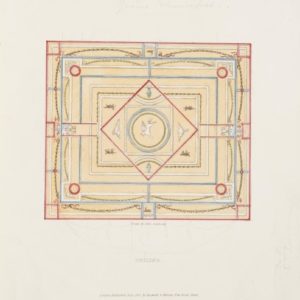
GOLDICUTT, John
3 800 € Add to basket
Specimens of ancient decorations from Pompeii
1825 -
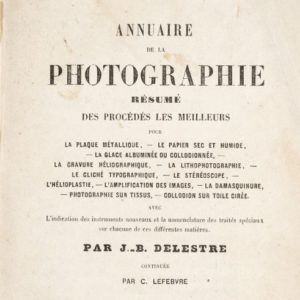
DELESTRE, Jean-Baptiste
2 500 € Add to basket
Annuaire de la photographie. Résumé des procédés …
1861



